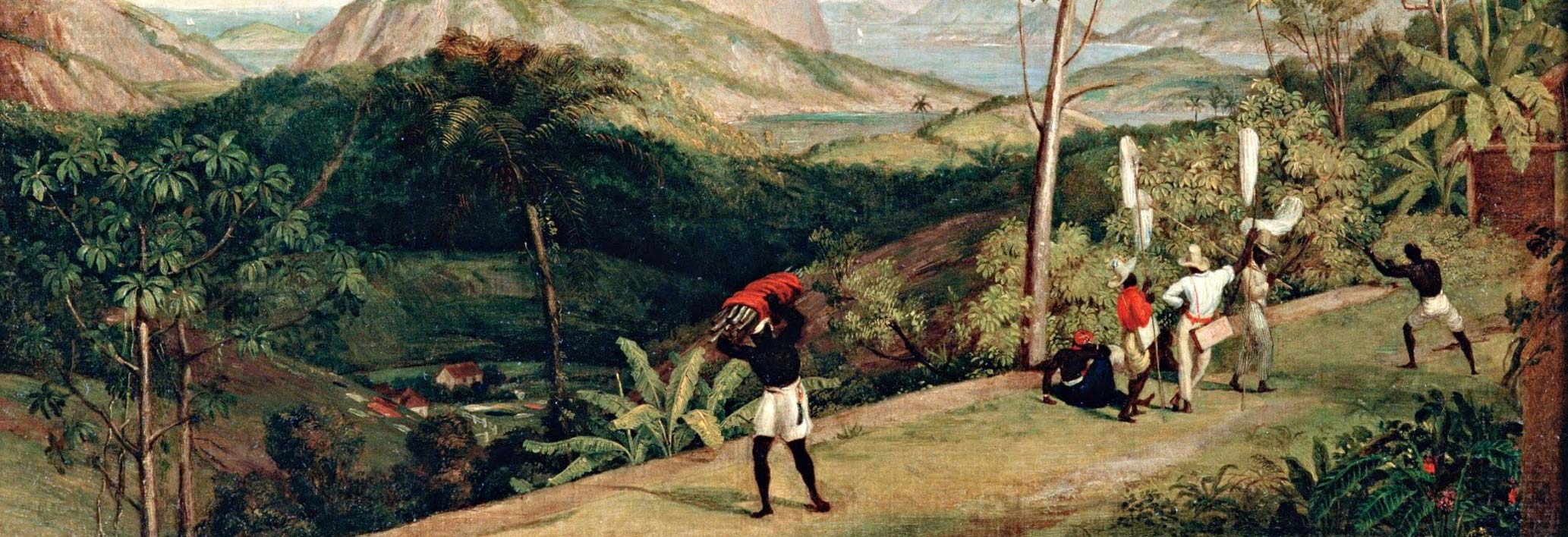Rufina was an African woman who was illegally enslaved twice and ultimately obtained her freedom by drawing attention to this illegality.
Most of what we know about Rufina’s life comes from the manuscript of a dossier regarding her complaint to authorities in 1854, and many details are incomplete. It is likely that she was born between 1820 and 1825 and she identified herself as a Mina, suggesting she was from the coast of West Africa. Rufina was probably shipped illegally into slavery from Lagos (present-day Nigeria) in the 1830s, as the trafficking of slaves had been prohibited north of the equator since 1815. Rufina was a slave of Colonel José Cabral and his wife Francisca in Uruguay, and was freed with the abolition of slavery there in 1846.
In March 1854, Rufina was a free woman residing in Passo de Peira, Uruguay (on the Brazilian border). She was kidnapped from her home along with her partner, Matheus, also a freed African Mina who had belonged to the Cabrals, and four of their children: Francisca, Maria do Pilar, Pantaleão, and Brum. One of the kidnappers separated Matheus from Rufina and her children, who were forced to walk for three weeks until they arrived in Canguçu. There, Rufina, Francisca, and Brum were sold to José Laurindo da Costa, while Maria do Pilar and Pantaleão were sold to the city of Piratini.
Rufina somehow managed to reach the police in the city of Porto Alegre and was imprisoned there with her two children and her captor. Rufina and Francisca told the story of their capture and her complaint became the subject of intense correspondence between authorities in Uruguay, Brazil, and England. It eventually reached the provincial president of Rio Grande do Sul, who ruled for her release and return to Uruguay.
To prove to the British that the abolition of slavery was being enforced in an exemplary fashion, Brazilian authorities made every effort to locate the whole family and return them to Uruguay. The entire family—with the exception of Matheus, who was never found—was returned home.
While Rufina was eventually able to return to her home, cases like hers were frequent in the 1850s and 1860s and this positive outcome was an exception. Most captured blacks remained slaves in Brazil and most kidnappers were acquitted, demonstrating the deep roots of slavery in nineteenth-century Brazilian society.
Bibliography
Borucki, Alex. “The ‘African Colonists’ of Montevideo: New Light on the Illegal Slave Trade to Rio de Janeiro and the Río de la Plata (1830–42).” Slavery & Abolition 30, no. 3 (2009): 427–44.
Grinberg, Keila. As fronteiras da escravidão e da liberdade no sul da América. Rio de Janeiro: 7 Letras, 2013.
---. "The Two Enslavements of Rufina: Slavery and International Relations on the Southern Border of Nineteenth-Century Brazil." Hispanic American Historical Review 96, no. 2 (2016): 259-90.
Lima, Rafael Peter de. “A nefanda pirataria de carne humana: Escravizações ilegais e relações políticas na fronteira do Brasil meridional (1851–1868).” M.A. diss., Universidade Federal do Rio Grande do Sul, 2010. www.lume.ufrgs.br/handle/10183/24034.
Author
Keila Grinberg
Adapted by
James Almeida, Briona Jones, and Steven J. Niven
Contributing Institutions
Hutchins Center for African & African American Research, Harvard University, Cambridge, MA.
Oxford University Press (USA) African American Studies Center.





